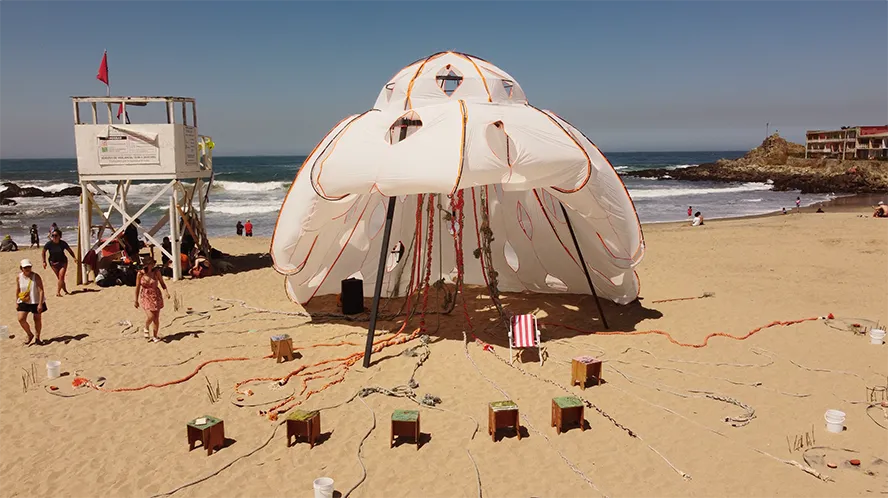En la Carpa de la Medusa (2024)
En la Carpa de la Medusa (Inside the Jellyfish Tent) emerged from my fascination with the sea, diving, and underwater landscapes—especially the kelp forests along the Chilean coast. These images began to take root in my artistic practice as visual and material intuitions: soft, floating forms that gradually led me to the figure of the jellyfish. Researching these organisms opened up a space between art and marine science and sparked questions about resilience, adaptation, and coexistence: what can we learn from jellyfish, beings that have inhabited the oceans for over 600 million years?
Leer más...
The project took shape between 2021 and 2024 through a collective process. Together with architects, researchers, artisans, marine biologists, and local communities, we developed an ephemeral structure: a lightweight tent designed to be installed on beaches as a space for gathering, learning, and exploration. Part of the process included early experiments with marine biologists, such as submerging clay pieces in the deep waters off the coast of Las Cruces—experimental reefs for fish. These gestures allowed us to explore the material relationship between art and environment before landing on the final format for the tent.
The first activation took place on December 20, 2024, at Playa Chica in Las Cruces. In the months leading up to it, we hosted community workshops with shellfish gatherers, artisans, and neighbors, who later co-designed the program: public talks, microscopy and speculative drawing workshops, craft exhibitions, and a nighttime video projection that transformed the beach into an open-air cinema. That day, the tent operated as an open classroom, weaving together learning rooted in place and generating a collective experience.
In the following months, alongside the teams from Nube Lab and the Estación Costera de Investigaciones Marinas (ECIM UC), we brought those learnings into local schools through educational workshops inspired by the world of the jellyfish—inviting students to think, create, and experiment. We also made the materials available in open-access format for use by other communities.
Today, In the Medusa’s Tent remains available to travel to new territories. I see this project not only as an artwork but as an adaptable platform for imagining more sustainable and sensitive futures—exploring, through the intersection of art, science, and community, new ways of inhabiting the coastal edge.
